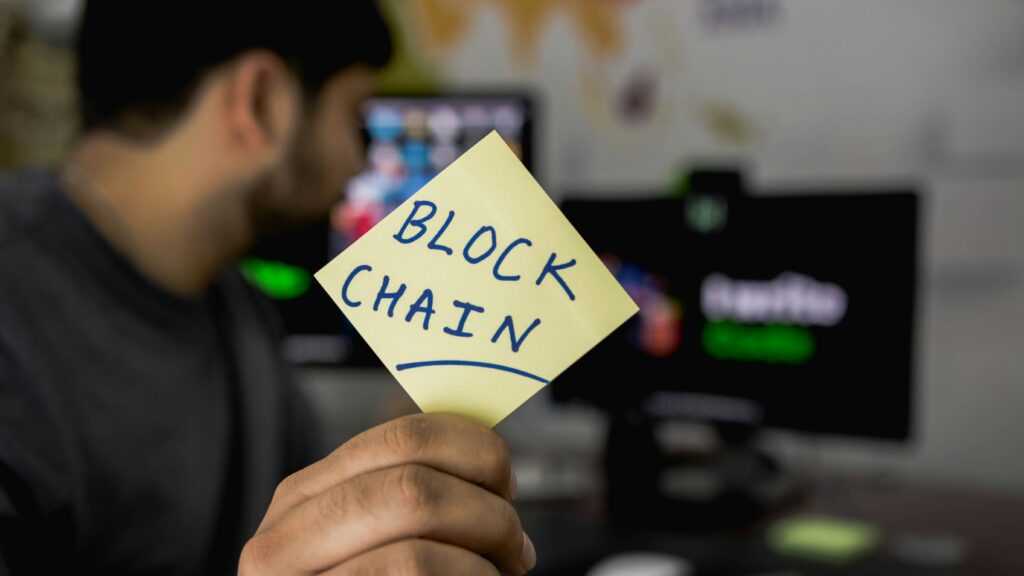Understanding Blockchain Technology
Blockchain technology forms the backbone of decentralized finance (DeFi), providing the essential infrastructure for secure and transparent transactions. Understanding its key components and their combined impact is crucial for appreciating its transformative role in finance.
Key Components
- Distributed Ledger:
In blockchain, a distributed ledger records all transactions across a network of computers (nodes). This ensures transparency and prevents data alteration. - Consensus Mechanisms:
Various consensus mechanisms like Proof of Work (PoW) and Proof of Stake (PoS) validate transactions in a decentralized manner. Nodes must agree on the transaction’s validity, ensuring security and trust. - Cryptographic Security:
Blockchain uses cryptographic techniques to secure data. Each block includes a unique hash, created by combining the previous block’s hash with transaction data, making tampering nearly impossible. - Smart Contracts:
Smart contracts are self-executing contracts with the terms directly written into code. They automatically enforce and execute agreements, reducing the need for intermediaries.
Benefits and Limitations
Benefits:
- Transparency:
Blockchain ensures transparency since all transaction data is publicly accessible on the distributed ledger. - Security:
The cryptographic nature of blockchain provides high security, protecting data from unauthorized access and alterations. - Decentralization:
Decentralized networks eliminate the need for central authorities, reducing points of failure and censorship risks.
Limitations:
- Scalability:
Blockchain networks, especially those using PoW, face scalability issues with slower transaction processing speeds compared to traditional systems. - Energy Consumption:
PoW mechanisms consume significant energy, impacting sustainability. PoS and other methods offer more energy-efficient alternatives. - Regulatory Challenges:
The decentralized and borderless nature of blockchain often clashes with existing regulations, posing legal challenges.
Introduction to Decentralized Finance (DeFi)
Decentralized Finance (DeFi) transforms traditional finance by utilizing blockchain technology. I’ll break down core principles and major DeFi applications to clarify its significance.
Core Principles
DeFi operates on several core principles. Transparency ensures all transactions are visible on public ledgers, increasing trust. Security relies on cryptographic methods to protect data and funds.
Decentralization eliminates middlemen, allowing peer-to-peer transactions. Accessibility provides financial services to anyone with internet access, promoting inclusivity. Lastly, interoperability enables various DeFi platforms and services to work together seamlessly.
Major DeFi Applications
DeFi has several major applications. Lending platforms like Compound let users lend and borrow assets without intermediaries. Decentralized exchanges (DEXs), such as Uniswap, allow trading directly between users’ wallets.
Stablecoins offer price stability by pegging cryptocurrencies to fiat currencies. Yield farming involves earning interest or rewards by providing liquidity to DeFi platforms. Lastly, prediction markets like Augur let participants bet on future events, leveraging collective knowledge for accurate forecasting.
How Blockchain Powers DeFi
Blockchain plays a vital role in enabling the functionalities and benefits of Decentralized Finance (DeFi). Through its core properties, blockchain technology addresses key aspects required for DeFi operations including security, transparency, and interoperability.
Security and Transparency
Blockchain ensures robust security and transparency in DeFi operations. Transactions are recorded on an immutable ledger, making it almost impossible to alter. For instance, Bitcoin and Ethereum networks use cryptographic principles to secure user data and transaction information. With every transaction being publicly accessible, blockchain promotes trust and accountability.
Smart Contracts
Smart contracts are self-executing contracts with terms directly written into code. They operate on decentralized networks like Ethereum, enabling automated, trustless financial agreements. For example, a loan agreement on Compound automatically enforces terms, releasing collateral upon repayment. This eliminates the need for intermediaries, reducing costs and enhancing efficiency.
Interoperability
Interoperability allows different DeFi platforms and blockchain networks to interact seamlessly. Cross-chain protocols like Polkadot and Cosmos enable this interaction. Users can swap assets or leverage services across multiple DeFi platforms without limitations. Enhanced interoperability fosters a more cohesive and versatile DeFi ecosystem, promoting broader adoption.
Each of these aspects, powered by blockchain, form the backbone of the DeFi landscape, driving innovation and providing a more inclusive financial system.
Case Studies of Blockchain in DeFi

Blockchain’s influence on DeFi has sparked numerous successful implementations and popular platforms. These case studies highlight the practical applications and impact of blockchain in the decentralized finance sector.
Popular DeFi Platforms
Several platforms showcase the potential of blockchain in DeFi:
- Uniswap: This decentralized exchange (DEX) leverages the Ethereum blockchain to enable peer-to-peer trading. It uses an automated market maker (AMM) protocol to facilitate liquidity without traditional order books.
- MakerDAO: MakerDAO employs smart contracts to manage a decentralized stablecoin, DAI. The platform ensures the value of DAI remains pegged to the USD, using collateralized debt positions.
- Aave: Aave offers a decentralized lending and borrowing platform. Users can earn interest on deposits or borrow assets using their holdings as collateral. Aave introduces unique features like flash loans, allowing instant, uncollateralized loans.
- Compound: Compound is another lending protocol on Ethereum. Users deposit assets into liquidity pools, earning interest based on supply and demand dynamics in the market.
- Synthetix: Synthetix enables the creation and trading of synthetic assets, representing real-world assets like commodities or fiat currencies. It uses smart contracts to maintain collateral and ensure liquidity.
Successful Implementations
Successful implementations of blockchain in DeFi demonstrate real-world benefits:
- Uniswap’s V3 Deployment: Uniswap V3 introduced concentrated liquidity, allowing liquidity providers to allocate resources efficiently. This innovation significantly increases capital efficiency, making trading more cost-effective.
- MakerDAO’s Multi-Collateral DAI: Initially relying solely on Ethereum, MakerDAO transitioned to accepting multiple collateral types. This move diversified risk and increased the adoption of DAI among users seeking stable digital currency.
- Aave’s Flash Loans: Flash loans, introduced by Aave, allow users to borrow instantly without collateral, provided they return the funds within one transaction block. This feature opens up arbitrage opportunities, adding versatility to DeFi operations.
- Compound’s Compound Governance Token (COMP): To decentralize protocol governance, Compound introduced COMP tokens. Token holders propose and vote on changes, ensuring community-driven development and decision-making.
- Synthetix’s Layer 2 Integration: Faced with scalability issues on Ethereum, Synthetix integrated with Optimistic Ethereum, a Layer 2 scaling solution. This integration reduced transaction fees and improved user experience, promoting higher platform usage.
These platforms and implementations illustrate how blockchain powers DeFi, revolutionizing financial services through decentralization, automation, and enhanced security.
Challenges and Risks
Despite the promise of DeFi and blockchain, several challenges and risks persist.
Scalability Issues
Blockchain networks often struggle with scalability. High transaction volumes can cause congestion. Network congestion leads to slower processing times and higher fees. Ethereum, the most widely used blockchain for DeFi, faces these challenges regularly. Layer-2 solutions and sharding are possible remedies. However, these are still in the experimental or early stages of deployment.
Regulatory Concerns
Regulatory concerns pose significant risks. DeFi operates in a legal gray area in many jurisdictions. Lack of clear regulations can result in variable compliance requirements.
Sudden regulatory changes can affect platform operations. For instance, in 2021, China’s crackdown on crypto activities impacted several DeFi projects reliant on Chinese markets. Clear regulations are essential for long-term stability but are currently inconsistent globally.
Security Threats
Security threats remain a primary concern. DeFi platforms are frequent targets of hacks and exploits. Smart contract vulnerabilities can lead to significant financial losses. Examples include the 2020 bZx protocol hack and the 2021 Poly Network breach.
Regular code audits and robust security protocols are necessary. Users also face risks like phishing attacks and scams. Awareness and vigilant practices can mitigate such risks but can’t eliminate them entirely.
Future Outlook
Blockchain’s role in Decentralized Finance (DeFi) continues to evolve, bringing numerous opportunities and challenges. It’s essential to examine upcoming innovations and their potential influence on traditional finance.
Innovations on the Horizon
Upcoming advancements in blockchain technology will likely address current DeFi limitations. One significant innovation is layer-2 scaling solutions, such as Optimistic Rollups and zk-Rollups, which promise to reduce transaction fees and improve network speed.
Another noteworthy development is the integration of decentralized identity systems. These systems aim to enhance privacy and user control by allowing individuals to manage their own identities securely. Examples include Sovrin and uPort.
Interoperability protocols also hold promise for DeFi. Projects like Polkadot and Cosmos intend to enable different blockchain networks to communicate seamlessly, broadening the applicability of DeFi solutions.
Potential Impact on Traditional Finance
DeFi is set to challenge traditional financial systems by offering more efficient and equitable alternatives. Traditional banks may face increased competition as DeFi platforms provide lending, borrowing, and trading services with lower fees and faster transactions.
Moreover, the tokenization of assets—including real estate, art, and stocks—could revolutionize how assets are traded and owned. Tokenization simplifies transfer processes, reduces costs, and increases market accessibility.
Additionally, increased transparency and security in financial transactions will likely become standard expectations. Traditional financial institutions might need to adopt blockchain solutions to stay competitive and meet these new standards.



 Chief Content Strategist & Unique Author
Paulo Okellyansy is the Chief Content Strategist responsible for curating and managing the platform’s editorial direction. With an in-depth knowledge of cryptocurrency markets and digital finance, Paulo crafts engaging, informative content that resonates with both newcomers and seasoned crypto enthusiasts. His ability to simplify complex topics and identify emerging trends has helped position the website as a go-to resource for cryptocurrency insights.
Chief Content Strategist & Unique Author
Paulo Okellyansy is the Chief Content Strategist responsible for curating and managing the platform’s editorial direction. With an in-depth knowledge of cryptocurrency markets and digital finance, Paulo crafts engaging, informative content that resonates with both newcomers and seasoned crypto enthusiasts. His ability to simplify complex topics and identify emerging trends has helped position the website as a go-to resource for cryptocurrency insights.
